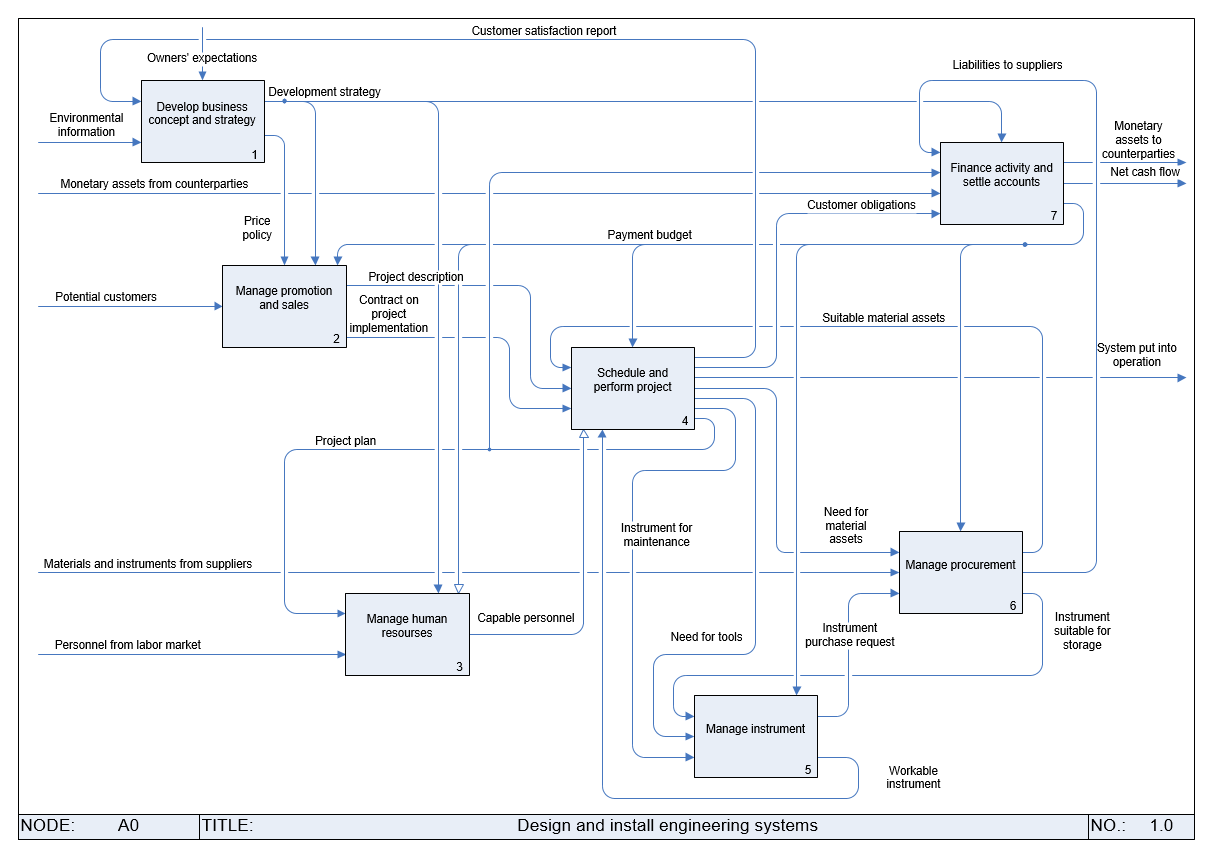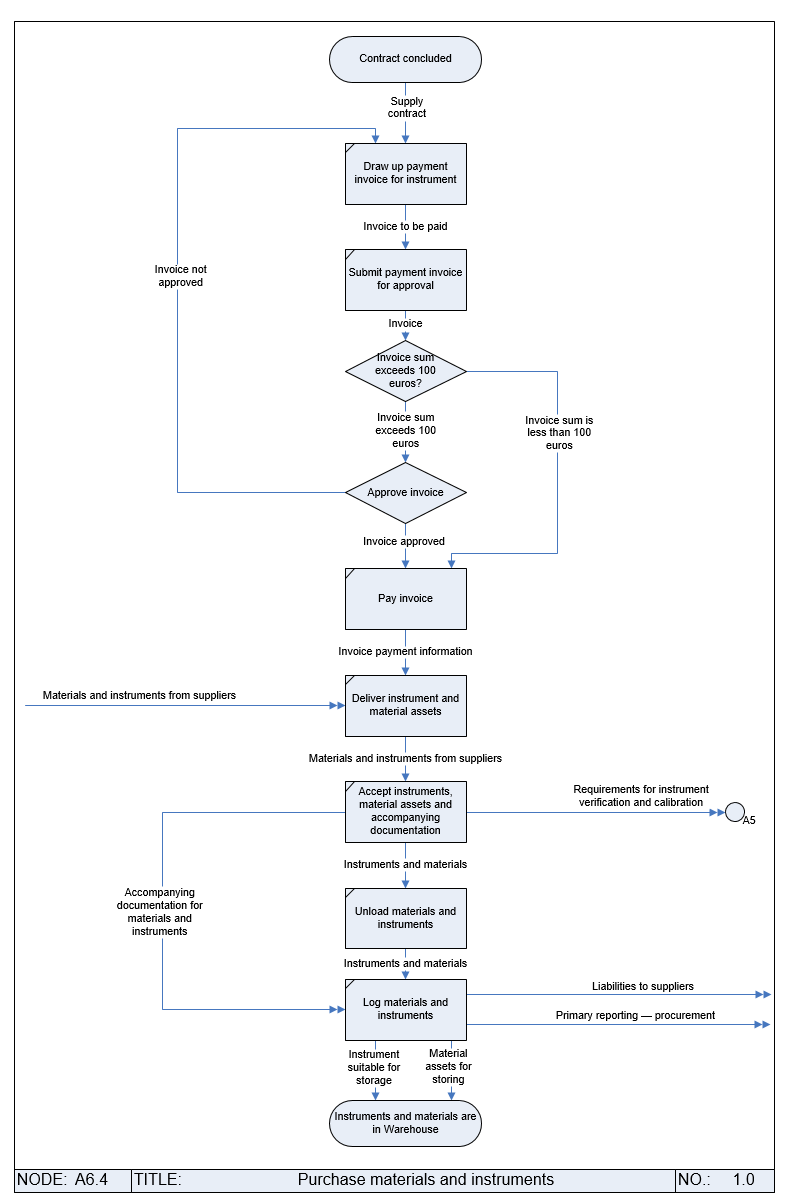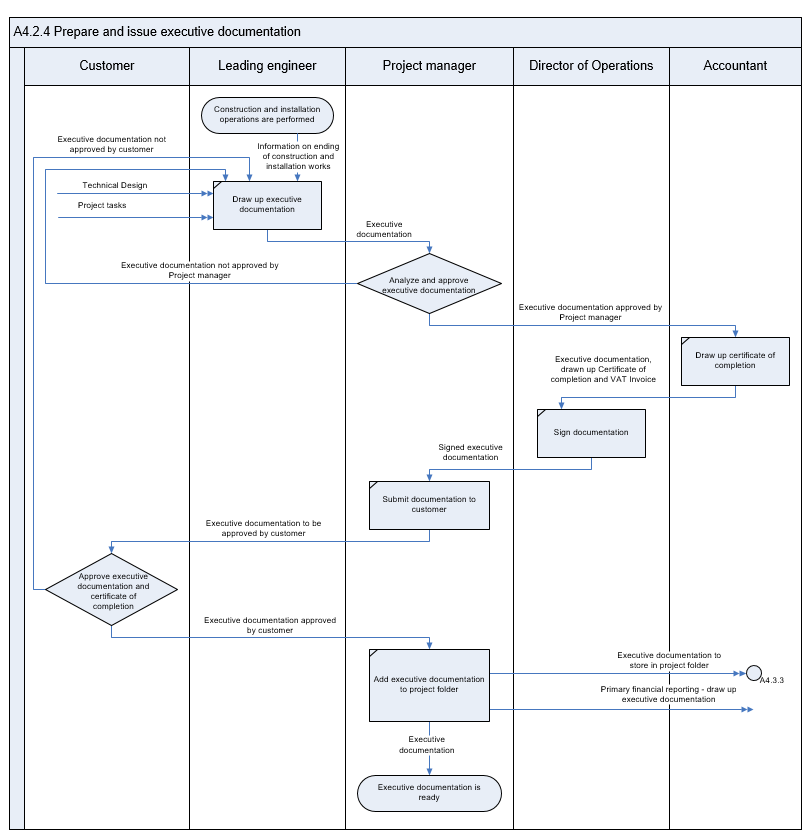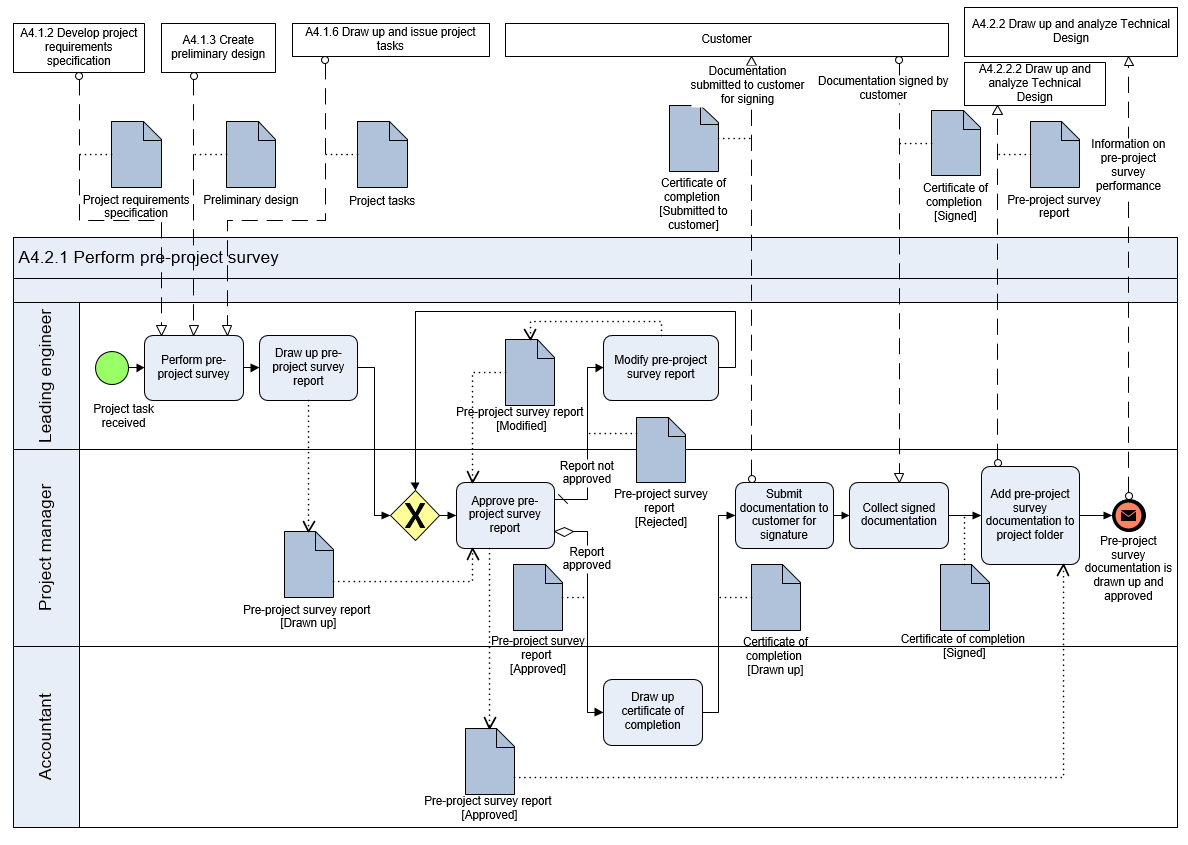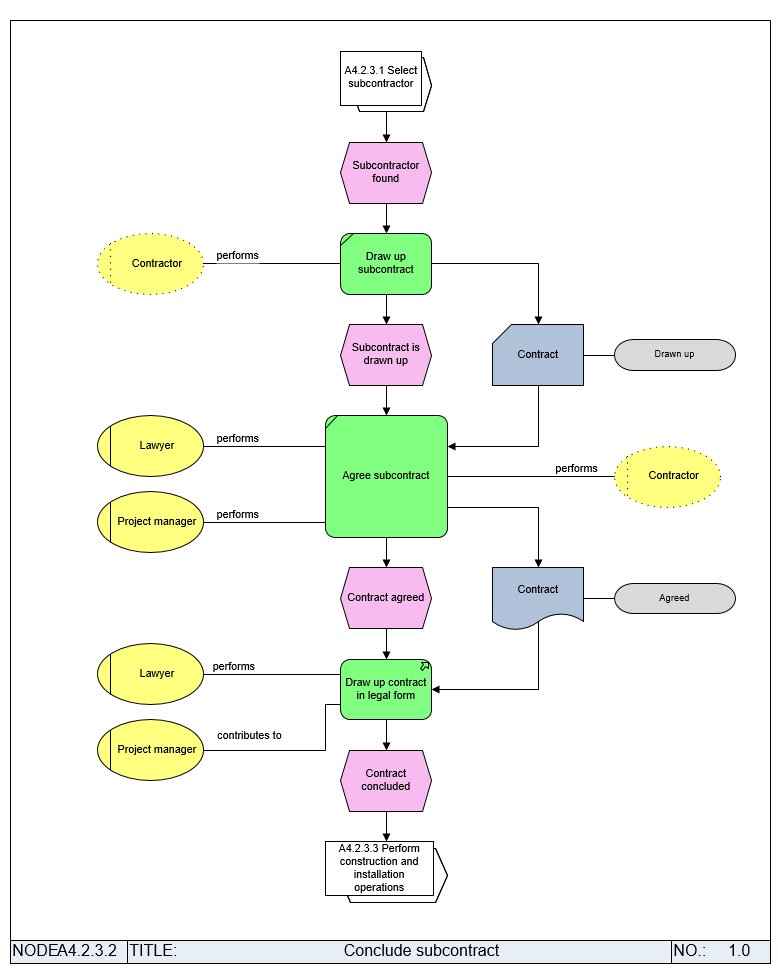Business Process Notations
IDEF0 NOTATION
IDEF0 is considered to be one of the most popular notations used to describe business processes and functions. It is based on SADT principles. IDEF0 is a graphical notation used to create a functional model that displays the system structure and functions, as well as flows of information and material objects that link these functions (see the figure for an example of the IDEF0 diagram developed in the Business Studio software. Business Studio contains all the necessary functions for the proper design of IDEF0 diagrams). The components of the IDEF0 syntax are boxes and arrows. Boxes represent functions, arrows represent data or objects related to functions and external environment.
The main principles of IDEF0 include:
- Decomposition. This means the partitioning of a modeled function into its component functions and thus, developing a hierarchical process model;
- 4 arrow types: 3 input types that are divided into inputs, controls and mechanisms (this division makes it possible to identify and analyze logic of input usage) and outputs.
Use IDEF0 notation to describe the top level of the process model. The top-level diagram is used to represent the subject of the model generally. Lower level diagrams describe algorithms of process performance and are developed in the Basic Flowchart, Cross-functional Flowchart, EPC or BPMN notations.
Learn more about IDEF0
For more information see the “Structures Analysis and Design Technique” book by David A. Marca and Clement I. McGowan.
BASIC FLOWCHART NOTATION
The notation is used to describe algorithm of process performance. The components of the Basic Flowchart syntax are Events, Processes, Decisions and Arrows of two types: Precedence and Object flow.
Decomposition is also one of the principles of this notation.
The Basic Flowchart notation may be used to describe either separate processes of an organization or low-level processes of an IDEF0 process model.
CROSS-FUNCTIONAL FLOWCHART
The notation is also used to describe algorithm of process performance. It uses the same syntax as the Basic Flowchart notation. In addition, it uses Swimlanes that define actors of process steps. These could be org units or functional objects.
Decomposition is also one of the principles of this notation.
The Cross-functional Flowchart notation may be used to describe either separate processes of an organization or low-level processes of an IDEF0 process model.
BUSINESS PROCESS MODEL AND NOTATION, VERSION 2.0
The notation describes algorithm of process performance. It was developed in 2011 as a standard for process modeling and performance. The notation is well understood both by business analysts and developers of the software used to automate process performance. The BPMN 2.0 standard is used to export process models from Business Studio to BPMS systems.
Business Studio supports 2 types of BPMN diagrams: process diagrams and collaborations. The following elements are used: Tasks and Sub-processes; Events; Gateways; 3 Arrow types: a Sequence Flow, a Message Flow, and an Association; Functional Objects: Documents, Information, Messages and Databases. Note that all diagram elements are repository objects in Business Studio.
Business Studio supports decomposition for BPMN processes, thus, you can develop a hierarchical tree of BPMN processes.
BPMN Process Descriptions are generated automatically in Business Studio, as well as other reposts. The notation is mainly used to describe low-level processes especially those whose performance logic is complicated.
EVENT-DRIVEN PROCESS CHAIN
EPC is a modeling language used to describe processes and workflows. An Event-driven process chain is an ordered graph of events and functions. Start and end events as well as actors, participants, and material object flows are defined for each function. Operators are used for arrow branching.
EPC functions can be decomposed. The child diagrams are described in EPC or BPMN notations only.
The EPC notation may be used to describe either separate processes of an organization or low-level processes of an IDEF0 process model.
Нотация VAD
Нотация VAD (Value-Added Chain) представляет собой концепцию, разработанную Майклом Портером, и предназначена для анализа и визуализации бизнес-процессов, которые создают ценность для клиентов.
Суть нотации заключается в описании основной и вспомогательной деятельностей. Основная деятельность включает в себя функции, которые напрямую связаны с производством и доставкой продуктов или услуг, в то время как вспомогательная деятельность представляет собой функции, обеспечивающие поддержку основным функциям.
В нотации VAD можно также отображать последовательность бизнес-процессов (рис. 2). При этом VAD не предназначена для моделирования логических условий в процессе.
Помимо процессов на диаграмме изображаются:
- продукты, производимые при выполнении функции VAD;
- потоки входящей информации и объектов;
- потоки исходящей информации и объектов;
- оргединицы выполняющие или участвующие в выполнении функции VAD;
- цель, на достижение которой направлено выполнение функции VAD;
- KPI функции VAD;
- программные продукты, поддерживающие выполнение функции VAD;
- риски.
Нотация FAD
Нотация FAD (function allocation diagram) предназначена для описания окружения функции. Нотация FAD очень похожа на нотацию EPС. Но в отличие от нотации EPC на диаграмме данной нотации описывается окружение одной единственной функции - той, чья диаграмма формируется.
При добавлении с палитры символа функции на диаграмму добавляется фигура объекта, чья диаграмма моделируется. На диаграмме изображаются:
- потоки входящей информации и объектов;
- потоки исходящей информации и объектов;
- оргединицы выполняющие или участвующие в выполнении функции;
- цель, на достижение которой направлено выполнение функции;
- KPI функции;
- программные продукты, поддерживающие выполнение функции;
- риски.
Модель FAD часто используется для подробного моделирования функций, расположенных на диаграмме EPC. Но также для одной функции EPC можно создать и диаграмму EPC, и диаграмму FAD одновременно.
